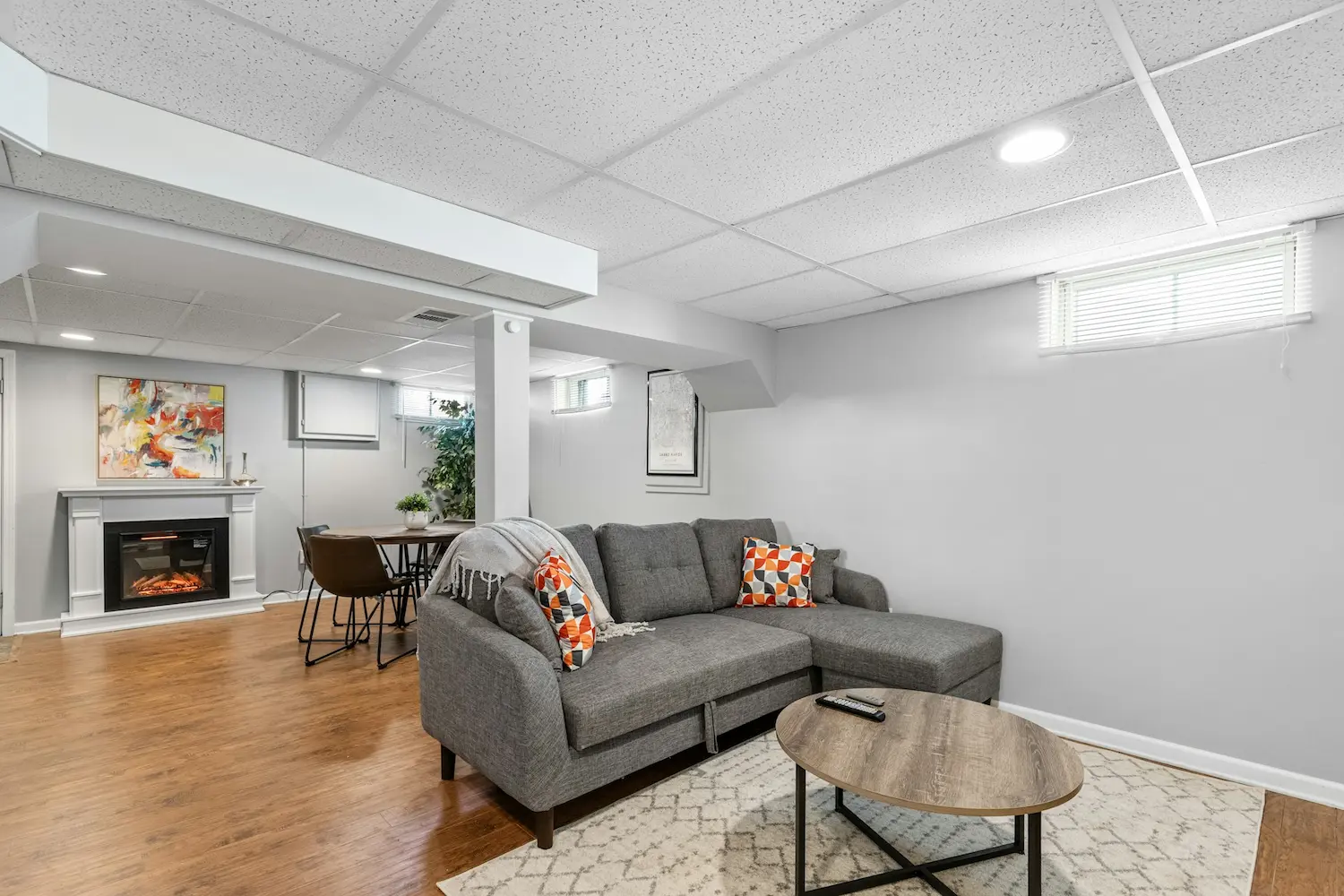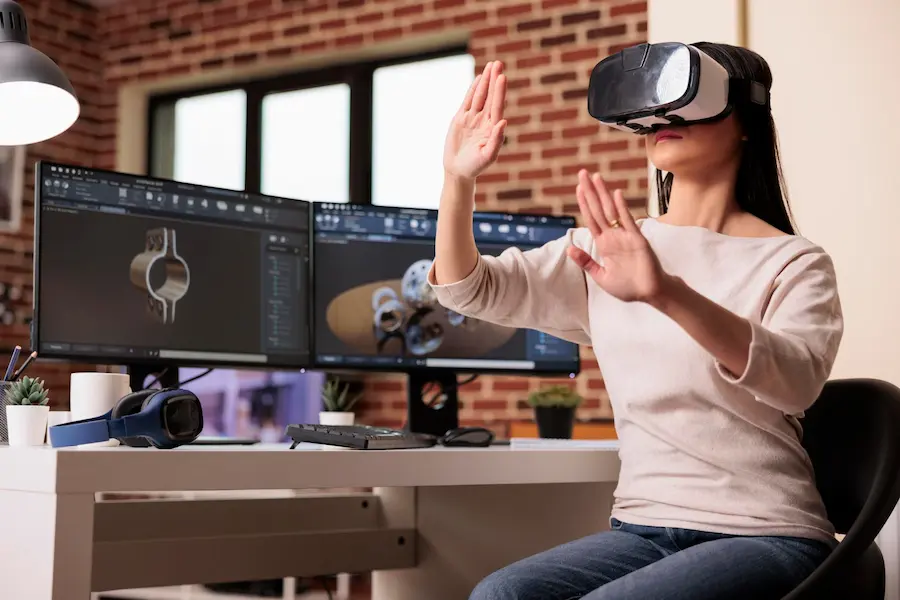3D architectural rendering creates a visual representation of a building design before construction begins. This method has become essential for architects, designers, and real estate developers because it helps everyone involved understand what the final outcome will look like. Renderings include important details like textures, materials, lighting, and settings, making it easy to fully visualize the finished architectural object.
Using 3D rendering also makes communication between architects and clients smoother, cutting down on misunderstandings and costly changes during construction. Clients can see and discuss specific features directly from a model, which ensures everyone is on the same page. 3D renderings also play a key role in marketing, helping developers attract investors and potential buyers by providing a vivid preview of a property. A recent study found that over 75% of architects and designers use real-time rendering weekly, with 27% using it daily. By making complex plans more accessible, 3D rendering is a powerful tool for planning, decision-making, and presentations in the architecture field.
Types of 3D architectural rendering
3D architectural rendering is a flexible tool that can be adapted to meet different needs. Here are the most common types:
Exterior rendering
Exterior renderings are vital for presenting the outside of a building within its environment, including surrounding structures, landscaping, and natural elements. These renderings allow architects and developers to see how a building's materials, colors, and shapes fit into its surroundings, whether it’s a street, rural landscape, or suburban neighborhood. For instance, an urban housing project might use exterior renderings to show how its facade blends with the existing architectural style of the area. These visuals are particularly useful for assessing design elements such as rooflines, facades, window placements, and outdoor features, ensuring they match the community's character.
In real estate, these renderings play a significant role in gaining support from local communities and planning boards, as they provide an architectural visualization of the building’s integration into its surroundings. Potential investors and buyers are more likely to engage with a project if they can see how it fits within the local environment. In cases where environmental impact is a concern, developers can use exterior renderings to demonstrate that their design is eco-friendly or includes green spaces, which can be appealing to both regulators and the community. Overall, exterior renderings are indispensable for establishing the visual impact of a project before construction, fostering support, and sparking interest.
Interior rendering
Interior renderings bring to life the design and layout of a building's inner spaces, offering insight into the arrangement of rooms, furniture, finishes, and light sources. These renderings give stakeholders a detailed view of what an interior space will look like, allowing for decisions on color schemes, materials, and layouts to be made with confidence. For example, a commercial developer might use interior renderings to preview the design of office spaces, helping potential tenants understand the functionality and aesthetic of the workspace. Interior renderings are valuable not only for design planning but also for staging spaces to appeal to specific audiences, such as luxury homebuyers, hotel guests, or retail clients.
Interior renderings also reduce potential costs by minimizing last-minute design changes. For instance, a hotel chain can avoid expensive rework by previewing how a renovated lobby will look and obtaining feedback on materials, furniture, and lighting beforehand. These visuals allow designers and clients to explore various layouts and choose the most practical and visually appealing options. Interior renderings are also used extensively in marketing materials, as they can evoke the ambiance of the space, helping to attract tenants, buyers, or visitors long before the project is completed. By providing an architectural visualization of the building’s interior, architects and designers can create engaging, personalized experiences that align with clients’ expectations.

Aerial rendering
Aerial renderings, or bird's-eye views, provide a comprehensive overview of a site and its surroundings, making them ideal for large-scale projects like residential communities, campuses, or commercial districts. By showing the spatial relationships between buildings, green spaces, roads, and parking areas, aerial renderings give viewers a better understanding of the layout and design on a larger scale. A real estate developer might use an aerial rendering to present a master-planned community, highlighting the position of homes, recreational facilities, and nearby amenities. This architectural visualization allows clients, investors, and even local authorities to visualize how the development will function as a cohesive space, aiding in zoning approvals and gaining community support.
These renderings are often essential for environmental planning and traffic management, as they show how a new development will impact the local infrastructure. A mixed-use development project, for example, could use aerial renderings to depict the arrangement of residential, retail, and open spaces, helping to assess pedestrian and vehicle flow. By providing this large-scale perspective, aerial renderings are invaluable in helping developers address concerns related to density, accessibility, and environmental impact. Aerial renderings not only make it easier for stakeholders to understand the project’s footprint but also serve as a strategic tool in marketing, providing a compelling architectural visualization of how the development fits into the wider community.
Walkthrough animation
Walkthrough animations offer a virtual tour of a building, giving clients an interactive experience that helps them understand the layout, design flow, and functionality of the space. By simulating a walk through different areas of a building, these animations allow viewers to experience the transitions between rooms, hallways, and open spaces. For example, a retail developer might use a walkthrough animation to showcase the layout of a new shopping mall, demonstrating how visitors would navigate the space and access various stores and other architectural objects. This is particularly useful for attracting tenants who want to understand the customer journey and the visibility of store locations.
Beyond retail, walkthrough animations are frequently used in residential and office projects, where spatial flow and user experience are key considerations. A luxury apartment developer, for instance, can use a walkthrough to show potential buyers the journey from the lobby to the individual apartments, emphasizing the quality and design features of each space. These animations are a powerful selling point, as they allow viewers to visualize the completed space and feel more confident about its functionality. Walkthrough animations also reduce misunderstandings between architects and clients by offering a clear representation of the design intent, which helps to avoid costly revisions later in the process. Overall, they enhance engagement and support decision-making by providing a tangible sense of the project.
Photorealistic rendering
Photorealistic renderings recreate every detail of a project with an almost photographic level of realism, including textures, lighting, shadows, and reflections. These renderings are essential for making designs look as close to reality as possible, which is especially useful in marketing and presentation. For example, a luxury condominium project may use renderings to show prospective buyers high-resolution images of the building’s future interior and exterior, highlighting finishes, spacious layouts, and scenic views. These renderings create a strong emotional appeal, making the project more attractive to high-end buyers who expect a certain level of quality and exclusivity.
Photorealistic renderings are also used extensively in architectural competitions and client presentations, as they provide a polished, professional look that is easy to appreciate without architectural expertise. Developers can use these images in brochures, websites, and advertisements to show off the best parts of a project. By showing the property in its best light, photorealistic renderings help developers stand out in competitive markets, allowing clients to see the true potential of a project. The ability to present a highly realistic image of the final product enables clients and stakeholders to make informed decisions and builds confidence in the project’s success.
Conceptual rendering
Conceptual renderings are typically created in the early stages of design and focus on conveying the broad ideas behind a project without much detail. These renderings often use simple shapes, muted colors, and basic outlines to show the relationship between spaces, structures, and surroundings. Architects and urban planners use more conceptual renderings to present initial ideas to clients and gather feedback before moving on to more detailed designs. For instance, a city council looking at a proposal for a new public library might review conceptual renderings to get an idea of the building’s proposed size, layout, and placement within the existing neighborhood.
These renderings allow for quick adjustments based on feedback, making it easy to test different design ideas and gather input from stakeholders. They are particularly useful in public projects, where early community involvement can be crucial for building support. By showing the vision behind a project, conceptual renderings provide a flexible, open-ended format for discussing changes and exploring alternative approaches. They allow architects to focus on the big picture without committing to specific materials, colors, or finishes, making it easier to refine their design as needed. In the initial planning stages, conceptual renderings are essential tool for aligning their vision with stakeholders' expectations and setting it up for further development.

Why architects use 3D rendering
Architects use 3D rendering because it makes their job easier and more efficient. These visual models help architects show their ideas in a way that’s easy for everyone to understand. Clients can see what a finished building will look like, which means they can give better feedback and feel more connected to the design. This reduces misunderstandings and speeds up the approval process, saving time and money. By showing realistic images, 3D renderings also help architects get approvals from local authorities or support from the community, which can be crucial for getting projects moving.
3D renderings are also useful for marketing. When architects present potential buyers or investors with lifelike images of a project, it becomes easier to show the project's value. Firms that use quality renderings in their portfolios often attract more clients because they can showcase their design skills in a very appealing way. Overall, 3D rendering not only improves communication but also helps get faster approvals and reach a wider audience.
Conclusion
3D architectural rendering has become an essential part of the design and construction process. It simplifies communication, helps avoid costly mistakes, and makes it easier to showcase ideas to clients, stakeholders, and potential buyers. Whether it's showing how a new building will fit into its surroundings, illustrating interior designs, or helping to secure funding, 3D renderings bring clarity to even the most complex projects. As the technology continues to evolve, architects and developers can expect 3D rendering to play an even bigger role in bringing their visions to life. If you want to learn more about how you can incorporate 3D architectural visualization methods into your business, contact 3D Source’s team for a demo call.





